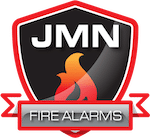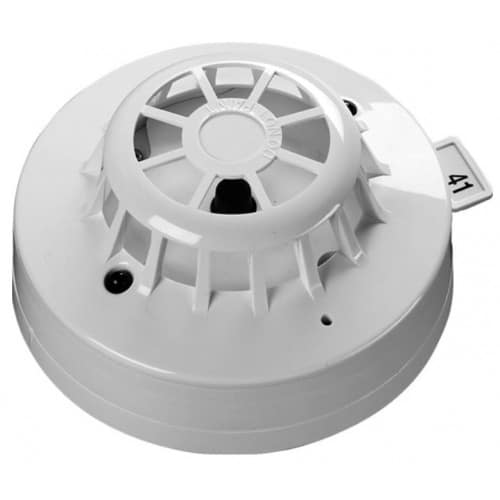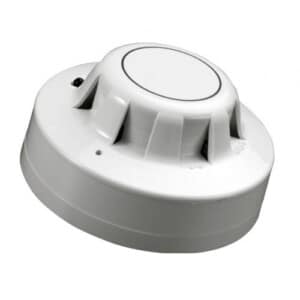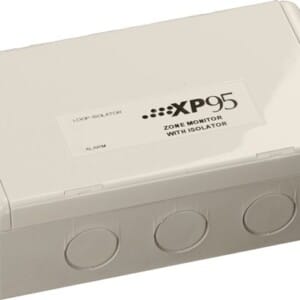Description
58000-400APO – Apollo Discovery Heat Detector
The Discovery Heat Detector uses a single thermistor to sense the air temperature around the detector.
Discovery heat detectors have a common profile with ionisation and optical smoke detectors but have a low air flow resistance case made of self-extinguishing white polycarbonate. For the European standard version of the detector, the five modes correspond to five “classes” as defined in EN 54-5. The classes in this standard correspond with different response behaviour, each of which is designed to be suitable for a range of application temperatures. All modes incorporate “fixed temperature” response, which is defined in the standard by the “static response temperature”.
Application Environments
- Carpark Loading Bays
- Dusty Environments
- Hospitals
- Hotels
- Medium to Large Buildings
- Offices
- University Campuses
- Warehouses
Brand Information
Discovery® is a range of high-specification, analogue addressable fire detectors and alarm devices. Discovery detectors offer effective false alarm management by a combination of EN 54 approved operating modes and sophisticated algorithms.
Drift compensation further reduces the likelihood of false alarms caused by a build-up of dust in the sensing chamber.
In addition to the familiar smoke and heat detectors, the Discovery range features two multisensor detectors. One is an optical/heat multisensor which can be used to protect against many types of fire risk. The other is a carbon monoxide/heat multisensor which protects against both smouldering fires and those generating heat.
Electrical Considerations
The Discovery Heat Detector uses a single thermistor to sense the air temperature at the detector position. The thermistor is connected in a resistor network, which produces a voltage output dependent on temperature. The design of the resistor network, together with the processing algorithm in the microcontroller, gives an approximately linear characteristic from 10°C to 80°C. This linearised signal is further processed, depending on the response mode selected, and converted to an analogue output.
Operating Principles
Discovery detectors are designed to be operated with purpose-designed control and indicating equipment that makes full use of their features. Discovery can, however, be connected to any fire control panel which can operate existing ranges of Apollo analogue addressable detectors with the previously noted rule, that the control and indicating equipment must not have a drift algorithm operating on Discovery devices. Contact the fire control panel manufacturer for guidance.
Communication
Discovery uses a digital communications protocol which has been developed from the XP95 protocol but differs in that it allows communication in three different modes: (Normal, Read and Write) to allow a more extensive exchange of information and commands than previous analogue addressable ranges. In addition, discovery can store data in non-volatile memory.
– The Normal mode is identical to the XP95 protocol with the exception that the five additional analogue value bits in the XP95 protocol extension have been re-defined so that the fire control panel is able to distinguish between Discovery and XP95 devices.
– The Read mode is used to check information stored in the non-volatile memory of each detector. It is accessed by using a simple extension to the Normal mode communication method from the fire control panel to the detector.
– In Write mode the fire control panel is able to write information to the detector by extending the communication method in the same way as in Read mode. During Read or Write modes a detector can signal an alarm by means of the alarm flag and alarm address bits.
Discovery detectors are compatible with XP95 and Soteria. It should be noted, however, that Discovery features will not be available when Discovery is used with XP95 fire control panels. Fire control panels with drift compensation algorithms should disable the algorithms when communicating with Discovery.
For fire control panels running CoreProtocol, please refer to the fire control panel manufacturer’s operating instructions.
Maintenance & Service
Detectors should be maintained according to BS 5839-1 or other locally applicable code. Test Equipment can be ordered from us which can test smoke and heat detectors.
Detectors should not be cleaned in the field except for careful removal of exterior dirt with a damp cloth.
EMC Directive 2004/108/EC
The Discovery Heat Detector complies with the essential requirements of the EMC Directive 2014/30/EU, provided that it is used as described in this datasheet.
A copy of the Declaration of Conformity is available upon request.
Key Features:
- Ideal in environments that are dirty or smoky under normal conditions
- Well suited for warehouses, loading bays and car parks
- Unaffected by wind or atmospheric pressure
- Five response modes
- Remote test feature






Reviews
There are no reviews yet.